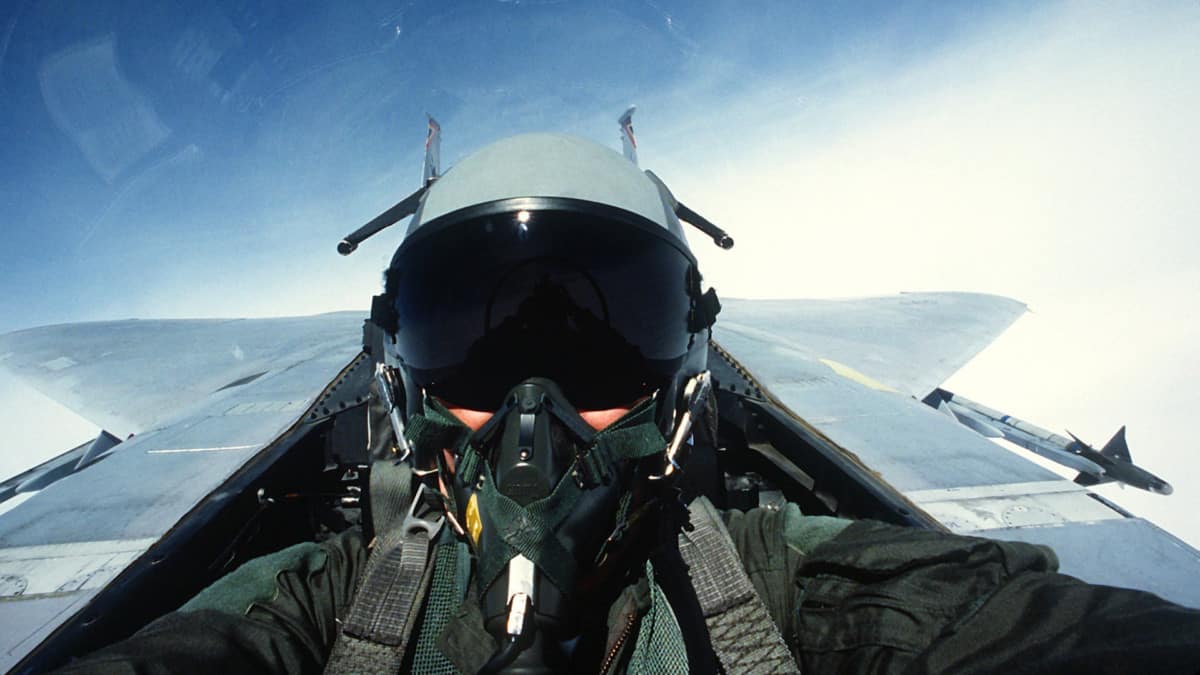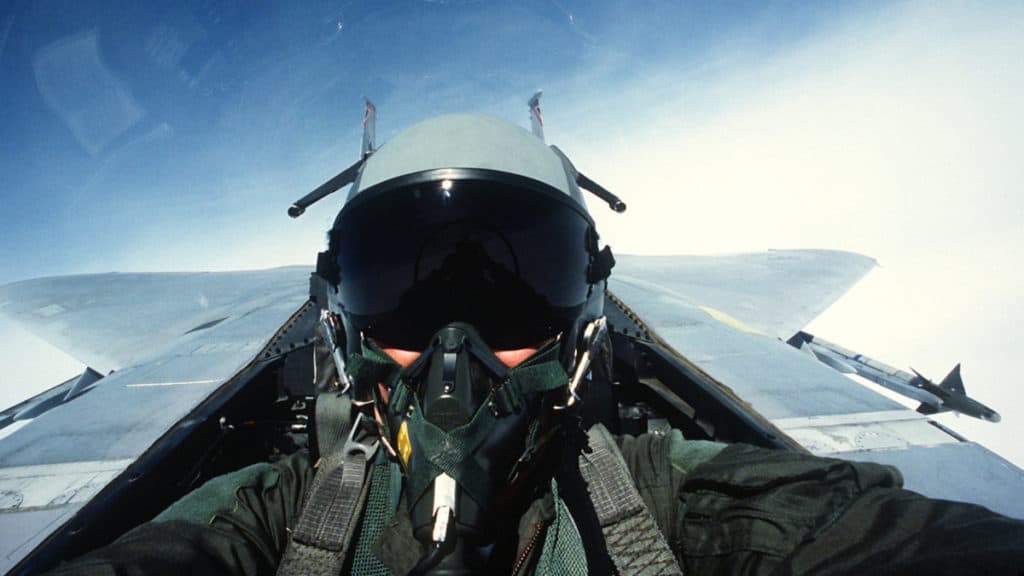
It is well known that all fighter pilots wear helmets when they fly, but have you ever seen a pilot flying a large military cargo plane wearing a helmet? Nope, me neither. So why do fighter pilots have to wear helmets when cargo pilots do not and what is the purpose of the flight helmet?
Helmets provide fighter pilots with protection from banging their heads on the aircraft canopy during abrupt maneuvers or turbulence. Protection when ejecting, noise reduction for hearing protection, and a place to mount the oxygen mask, radio, sun visor, weapons, navigation & targeting displays.
The cockpit environment that the two pilots sit in are very different from one another and the addition of a flight helmet plays multiple roles for the fighter pilot. Cargo pilots sit in a large, open, pressurized cabin without an ejection seat system. Because of this, the details covered in this article do not pose a problem for the cargo pilot but do for the fighter pilot. Read on to find out what these problems are:
Do Fighter Pilots Wear Helmets For Protection?
No matter what size of fighter jet the pilot sits in the space inside can be small, especially for those pilots at the taller end of the height limits, hence why there are height limits for certain job positions in the military.
By far the main job of the helmet is to give the pilot’s head protection from impact. During abrupt flight maneuvers or even turbulence, some pilots can bang their heads on the canopy or supporting structure. Without a helmet, these bumps can be enough to disorientate or knock a pilot unconscious, usually with dreadful consequences.
This is the reason why I personally wear a helmet when I’m flying in my helicopter, and I’m only a 5’6″ Umpa-Lumpa!
The other protection a flight helmet offers is during an ejection of a pilot. Not all fighter jets eject the whole canopy. Some of the smaller jets have explosive strips within the glass above the pilot’s heads that detonate just before the seat fires. This breaks the glass creating a hole for the pilot and seat to punch through. Without a helmet, this could get ugly.
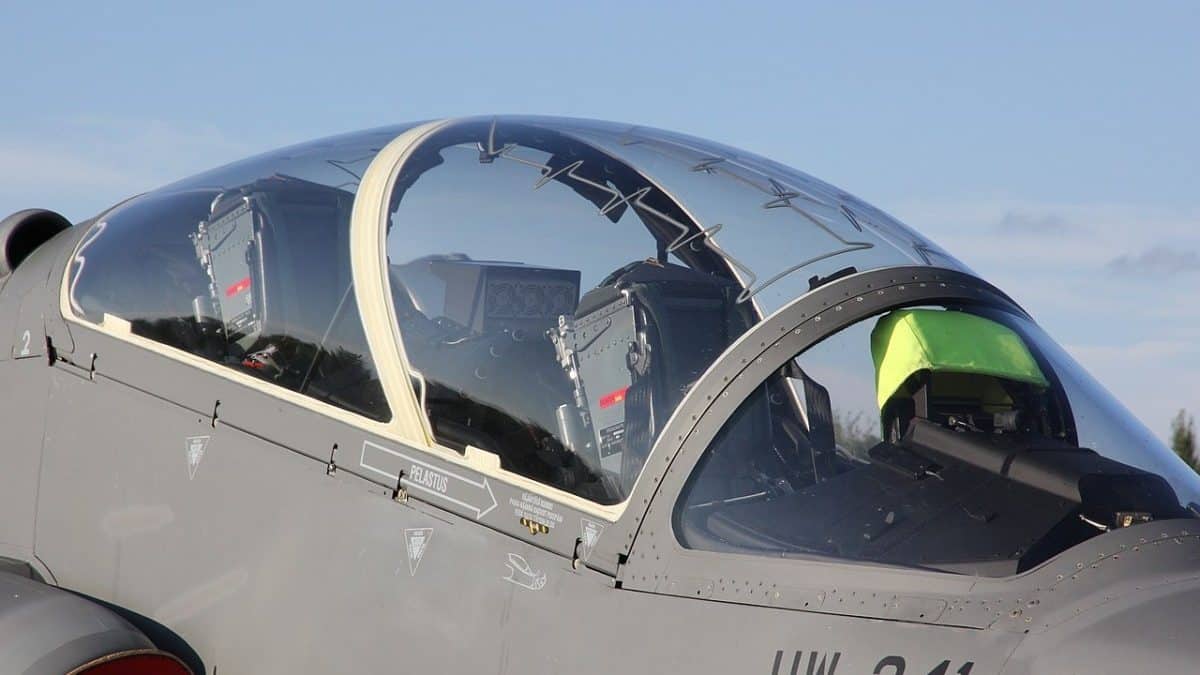
The helmet also helps protect the head and face from wind rush during high-speed ejection and during landing under a parachute. Even a small impact to the head from landing on a rock or trees can be enough to harm the pilot. By wearing a helmet, head trauma can be greatly reduced, hence the reason why cyclists and motorcyclists are advised to wear helmets.
Do Fighter Pilots Wear Helmets For Noise Reduction?
Gas turbine jet engines are loud, over 150dB loud and the high-frequency noise they generate is deafening. Sitting only a few feet from one or two of these engines is enough to permanently damage a pilot’s hearing. To overcome this the helmets are fitted with internal ear cups to help reduce the noise level to a safe limit.
Once the helmet is on, the ear cups gently seal around each ear creating an effective noise barrier. In addition, small speakers are mounted into each ear cup to allow the pilot to hear all the radio and aircraft communications.
To further enhance hearing protection pilots can now be fitted with custom silicone earmolds that have tiny integrated speakers. By inserting these ear molds into the ear canal, putting on the helmet, then plugging in the earmold speakers into the helmet’s communications system the pilot can enhance their hearing protection and the clarity of the heard communications.

Join My Newsletter & Get Great Tips, Information and Experiences To Help You Become a Superb Pilot!
The custom ear molds can reduce noise by an additional 30dB on top of the helmet which makes them a great addition. I personally use these on my helmet and it’s incredible how well they work. Even a passenger sat 3 feet from me talking without the gas turbine engine running cannot be heard once I have just the earplugs in!
If you wish to find out more about these custom earmolds, check out Westone.com in the link below. They do hearing protection for not just aviation, but to wear when hunting, doing construction, or playing music.
If you wish to find the earmolds for aviation, check in their Military section.
Westone.com – Custom Hearing Protection
Do Fighter Pilots Wear Helmets as a Mounting Platform?
One of the added benefits of wearing a hard ‘Brain Bucket’ or ‘Bone Dome’ as they are commonly referred to is that it is a solid foundation on which to mount equipment that helps the pilot fly better and more efficiently. There are several pieces of equipment that are mounted to most fighter pilots’ helmets:
Communication Systems
To be able to talk to either their crew, ground personnel, other pilots, or air traffic control, pilots need a microphone and speakers. Once the engine is running the ability to talk without an amplified communications system is practically impossible. Most microphones that pick up the pilot’s voice are mounted in the face mask which also doubles as the oxygen mask.
In the side of each helmet is the noise-reduction ear cups mentioned earlier. Within each ear cup is a small speaker that projects the communications audio into the pilot’s ears. Once the helmet is on and the face mask is fitted the pilot can talk at a normal volume and they can be clearly heard and they can clearly hear.
The helmet also makes sure the comms system stays in place during the roughest flight maneuvers!
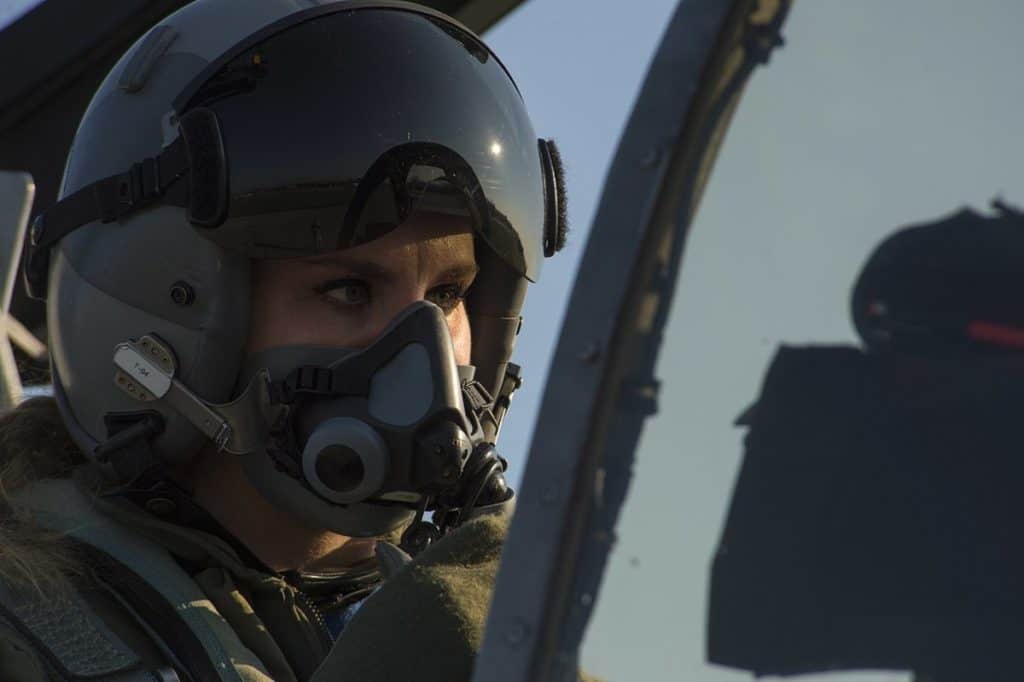
Sun Visor
All pilots need eye protection from the sun’s harmful UV radiation. UV radiation increases by 5% with every thousand feet climb in altitude. Without the ability to close a sun visor on the pilots’ helmet, they would soon start to become affected by the radiation and begin to lose visual acuity, not good for a pilot!
By having a sun visor that can be moved up and out of the way with a simple thumb and finger movement it gives the pilot the opportunity to ‘Don Their Shades’ as they wish. Some helmets can also come with an automatic sunglass protection visor that operates very similar to Transitions lenses on everyday glasses. This makes the need to move the sun visor unnecessary.
Oxygen Mask
Once a pilot begins to climb above 10,000 feet the effects of hypoxia can begin to set in and cause the amount of oxygen being received into the lungs of the pilot to decrease. Left long enough, the pilot will become unconscious. To prevent this a dynamic oxygen pressurization system is fitted to the pilot’s mask to help maintain the correct amount of oxygen delivery to the pilot no matter what altitude the aircraft is at.
Due to the sheer speed at which a fighter jet can climb and descend the system is required to operate rapidly to ensure the pilots’ oxygen level in the blood is perfect. By mounting the oxygen mask to the helmet it ensures this system works flawlessly without any second thought from the pilot and it also aids in maintaining oxygen supply when the pilot ejects at a high altitude due to a seat-mounted oxygen bottle which automatically activates once the pilot ejects.
Heads-Up-Display (HUD)
On today’s modern fighter jets, navigation, targeting, flight, and weapons data can be projected onto the visor of the pilot. This allows the pilot to see all the necessary information at all times no matter which way they are looking. Before this invention, the pilots had to scan their instrument panel or look at the HUD mounted in a fixed location on the top of the cockpit panel.
The technology has come along so far that now the pilot’s helmet for the F-35 Raptor is estimated to cost around $400,000 and projects imagery onto the visor so the pilot can even look ‘through’ the floor of their aircraft to see enemy positions below!
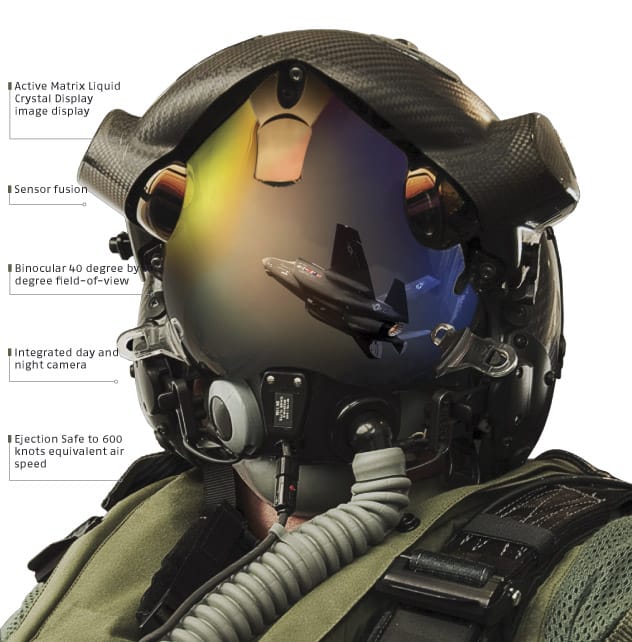
By having all the information the pilot needs in view at all times can make the difference between life and death when the time taken to move their head to glance at a fixed display could be a split-second delay that the pilot cannot afford!
To Finish
Fighter pilots wear flight helmets for protection, communication, and flight efficiency because of the small, enclosed space in which they sit. Unlike cargo transport pilots who have lots of room and a more controlled, pressurized environment, the fighter pilot needs this equipment to help keep them safe.
Without a flight helmet, many a pilot would not have made it back to base and this small, but sometimes expensive piece of equipment can be just as important as the aircraft itself because without the functioning pilot, the aircraft is not going to be able to do its job properly!
Further Reading:
If you found this article helpful may I suggest a few more for you to read:

